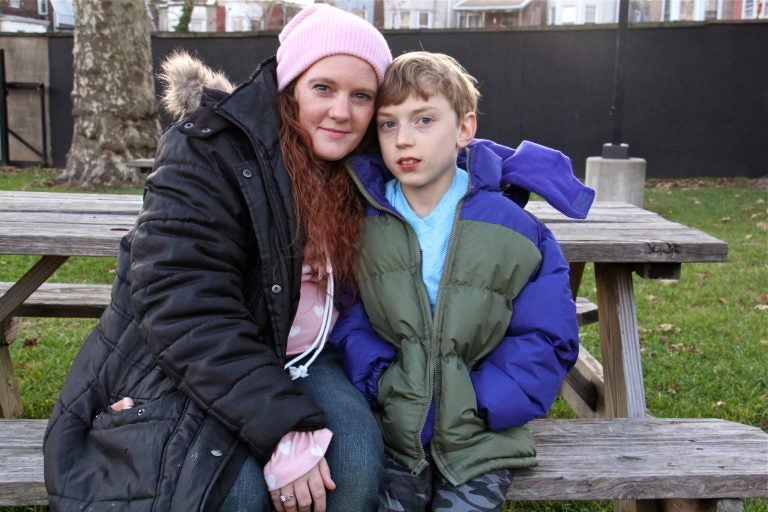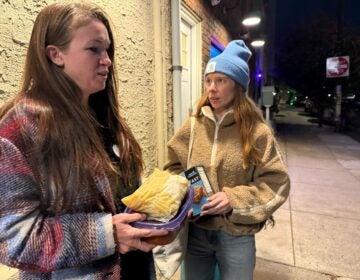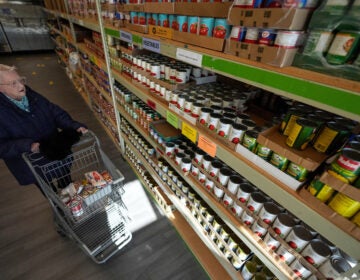Pa. residents brace for Trump administration’s proposed cuts to food stamps
Pennsylvania is among the states that would be especially hurt because utility costs are significantly higher than the national average.
Listen 1:43
Susann Schofield, 39, and her son Brice, 11, will be affected by the USDA's proposal to reduce SNAP benefits (Emma Lee/WHYY)
Susann Schofield’s eleven-year-old son Brice has a rare heart defect. Because of his unpredictable illness, she takes care of him full-time and doesn’t work outside the home.
For the Philadelphia mom, getting by month to month is tough, and she relies a lot on the Supplemental Nutrition Assistance Program, commonly called food stamps.
“If they cut it, I don’t know what I would do. I would have to look for other ways to be able to take care of Brice because it wouldn’t be feasible at all for me to live on my own,” says Schofield.
Schofield’s food stamp allowance would go down $70 dollars a month if a Trump administration proposal to reconfigure the food stamp formula goes through. It would slice $4.5 billion from SNAP’s $68 billion budget.
The United States Department of Agriculture determines these benefits for individuals in part based on how much people spend on utility bills.
The department says utility calculations are “outdated” and vary too much state-to-state. It plans to impose a standard across the county.
Currently, states calculate average energy costs for their residents and report those estimates to the USDA.
U.S. Secretary of Agriculture Sonny Perdue has said it’s important to “reduce the discrepancies they see across the country,” and operate more consistently.
If the proposal goes through, 19 percent of SNAP households would see cuts, while 16 percent of recipients would see increases. Almost 8,000 households would lose benefits entirely.
Pennsylvania is among the states that would be especially hurt because utility costs are significantly higher than the national average. The average Pennsylvanian would lose $40 in benefits per month.
“Households are going to have to use more of the little actual cash they have to buy food instead of paying home energy bills,” said Patrick Cicero of the Pennsylvania Utility Law Project, adding that families with elderly or disabled members would be hardest hit.
This is the third time this year that cuts have been proposed for the food stamp program.
Louise Hayes, of Philadelphia Community Legal Services, believes the administration’s rationale is not valid. “Really this is just an excuse to cut the program,” she said.
Susann Schofield pushed back on the idea that she could find a way to reduce her own energy costs. She lives in a brick house built in the 1920s in the Mayfair section of Philadelphia.
“It’s drafty. And there’s nothing I can do to fix that,” she said.
The public comment period for the administration’s proposal will end Dec. 2.
The food stamp program kept over three million people out of poverty in 2018.
WHYY is your source for fact-based, in-depth journalism and information. As a nonprofit organization, we rely on financial support from readers like you. Please give today.





